Randomized clinical trial compares effectiveness of topical ciprofloxacin to saline drops

Saline drops can be used instead of topical antibiotics following myringotomy with the insertion of tympanostomy tubes, a new study finds. In a randomized clinical trial in which patients received either saline drops or ciprofloxacin intraoperatively and then for five days following surgery, saline drops proved just as effective as antibiotics.
Cleveland Clinic is a non-profit academic medical center. Advertising on our site helps support our mission. We do not endorse non-Cleveland Clinic products or services. Policy
“This study is important because it addresses two significant issues in healthcare,” states Brandon Hopkins, MD, Section Head of Pediatric Otolaryngology within the Cleveland Clinic Head and Neck Institute and senior author of the article. “The average cost for the topical antibiotic usually prescribed following the placement of tympanostomy tubes is $42. When a steroid is added, the cost can be as high as $250. These are significant expenses, especially when you consider that there are about 670,000 of these surgeries done in the United States each year. Additionally, given concerns about the development of antibiotic resistance, we want to be sure to use antibiotics only to treat infections whenever possible.”
In children under 15 years old, myringotomy with the insertion of tympanostomy tubes is the most frequently performed surgery in the United States. Tympanostomy tubes are most commonly inserted as a result of frequent or persistent ear infections or fluid in the middle ear. With an incidence of 16%, early tympanostomy tube otorrhea (ETTO) is the most common complication of this procedure. ETTO is defined as ear discharge within the first four weeks following surgery. Several topical applications are effective at preventing post-operative ETTO, including antibiotics, antibiotics with steroids, and irrigants (such as saline solution).
“Previous research has discussed the use of saline as an intraoperative irrigant, but, to our knowledge, the use of saline drops following surgery has not been reported, notes Dr. Hopkins.
Between November 2015 and September 2016, 140 consented patients underwent tympanostomy tube placement and completed the study-related follow-up weekly surveys and post-operative office visits. Twelve of these patients had purulent otorrhea at the time of surgery. They were given antibiotic therapy and excluded from the analysis. The remaining patients were randomized into intraoperative plus 5 days of either ciprofloxacin (61 patients) or saline (67 patients) drops.
Parents completed weekly email surveys regarding the incidence, duration, type, management and perceived disruptiveness of otorrhea, as well as their protocol adherence. At the post-operative visit, which is generally four to six weeks after surgery, the otorrhea information was again taken from parents. Tube patency status was also ascertained at this time via pneumatic otoscopy.
There was no statistically significant difference in the week-by-week otorrhea rates, percentage of days in which otorrhea was present, quality of life or tube patency.
Incidence of ETTO was 23.9% in the saline cohort and 16.7% in the ciprofloxacin cohort (P = 0.32). Otorrhea was present for 2.8% of the days in the ciprofloxacin group and for 4.5% of the days in the normal saline group (P = 0.74). No difference was found in the rate of tube obstruction. Quality of life and the number of doctor visits for otorrhea were similar as well.
“Interestingly, when parents reported on the level of disruption caused by otorrhea events, they indicated that otorrhea events were only a little disruptive,” Dr. Hopkins says.
In patients without an active ear infection, saline can substitute for ciprofloxacin, reducing cost and unnecessary antibiotic use. The antibiotic ear drops cost an average of $42 per prescription, may lead to discomfort and/or allergic reactions, and may contribute to antibiotic resistance.
“Our findings indicate that we can use saline drops during and after surgery to prevent ETTO, reserving topical ciprofloxacin for the patients who actually develop otorrhea,” Dr. Hopkins states. “Next steps might include using additional treatment arms that look at the impact of no topical treatment, as well as different topical antibiotic or combination treatments.”
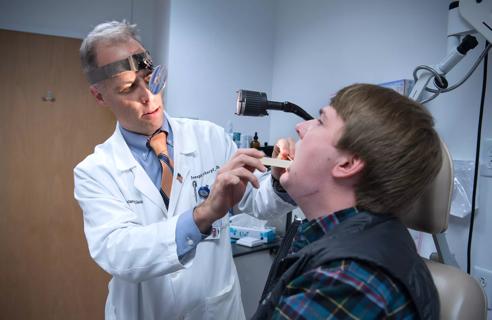
Strong communication with the patient and a thorough approach are essential
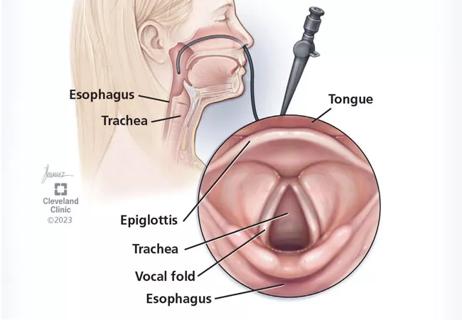
Cleveland Clinic physicians weigh in

New research adds to understanding of an understudied link
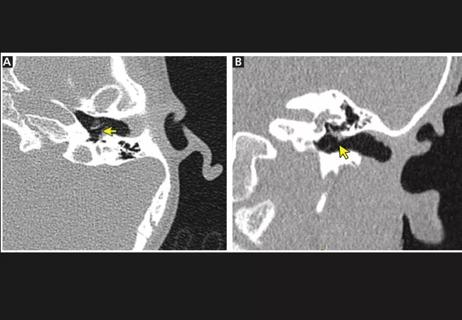
The rare condition can cause structural damage if untreated
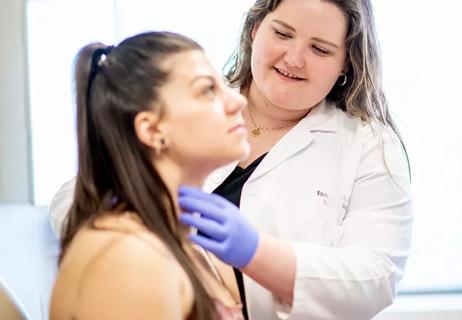
A recently published case series highlights the broad range of laryngeal findings that can present among individuals with EDS

Newly published research shows how the surgical technique is a game-changer for patients with ORN

First five-year prospective study provides valuable data to guide decision-making
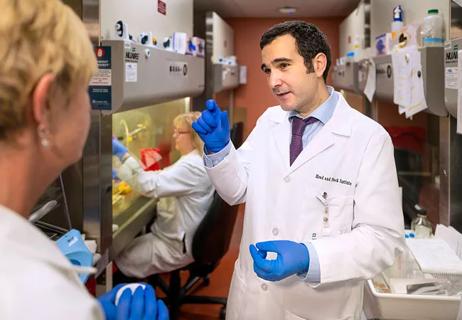
The Head & Neck Institute will make its initial footprint in the newly constructed BioRepository building